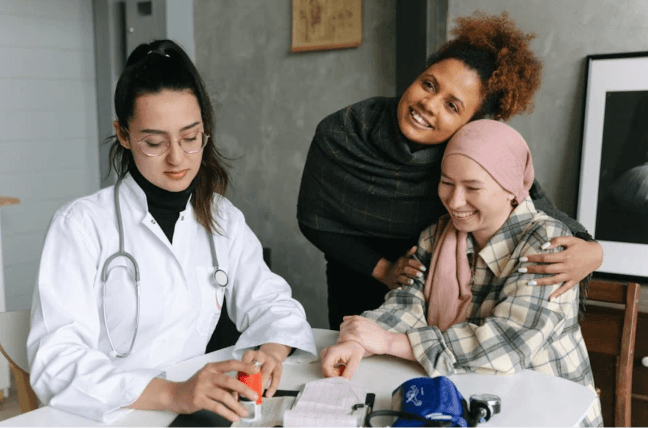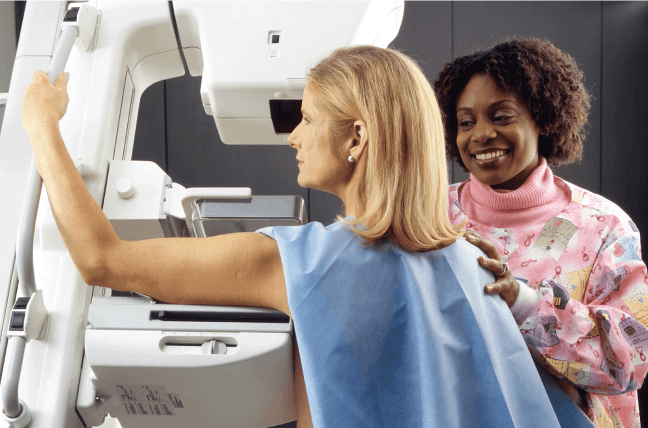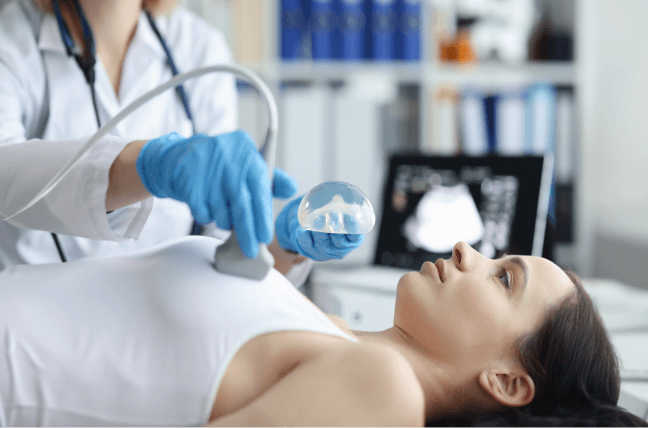Mammogram, Ultrasound or Biopsy? Diagnosis: Understanding Breast Cancer Tests

Being recommended a breast cancer test, whether it's a breast mammogram, ultrasound, or biopsy, can bring up a lot of emotions. Even when doctors say it's just to be sure, it's common to feel uncertain or anxious about what comes next, and that's alright.
The truth is many breast diagnosis tests are just precautionary measures that offer doctors a clearer view of the patient's breast health. This especially helps when a physical exam doesn't offer enough information. While it's normal to feel concerned about them, it's also worth remembering that early detection plays a key role in supporting successful treatment.
Whether you're going one yourself or supporting someone else, knowing what each test involves and how to prepare can make the experience feel less overwhelming.
In this guide, we'll walk you through the different breast cancer diagnosis tests, so you can approach them with confidence.
When your doctor recommends tests, here's what it really means
Getting started with breast cancer diagnosis can be intimidating, but the first step is often a simple conversation between you (or the caregiver) and the doctor. They ask about the health history, previous breast issues, family cancer cases, and current medications like hormone replacement therapy (HRT).
The doctor will then examine the breast area and check the lymph nodes in the armpits and above the collarbone. If they notice anything that needs closer attention, like any lumps, nipple discharge, size changes, or breast dimpling, they may recommend additional tests for a closer look.
It's important to remember that being referred to tests doesn't mean cancer is present. They help to understand symptoms, rule out any concerns, and guide the next steps in the cancer care journey.
While going through tests is challenging, taking this step early gives the best chance of catching issues when they're still easier to treat. According to the American Cancer Society, when breast cancer is found at an early, localised stage, the 5-year survival rate is 99%.
Mammogram: The first look inside

Source
If you're wondering, "What is a mammogram?", it's a low-dose X-ray that captures images of the breast tissue in just a few minutes to detect changes early. There are two types of breast mammograms:
A screening mammogram is when no symptoms of breast cancer are visible.
A diagnostic mammogram is more detailed when symptoms are present, or a screening mammogram shows something.
What to expect?
A breast mammogram procedure is simple on your part; you'll have to change into a gown and stand next to the machine.
The radiographer will then gently position the breast between two flat plates and press down for just a few seconds to capture the image. It might feel uncomfortable or even slightly painful, but it's only for a short time.
What does it show?
Mammograms help spot unusual areas in the breast, such as:
- Calcifications: Tiny calcium deposits that are mostly harmless, but some patterns may need further tests.
- Masses: Lumps in the breast that could be fluid-filled (usually benign) or solid (may need an ultrasound or a breast biopsy).
- Asymmetries: Uneven tissue, often due to positioning, but worth a second look.
- Distortions: Changes in breast shape that are sometimes linked to past surgery and sometimes are unexplained.
Most mammogram findings are not cancerous, and these results simply help doctors decide if any additional testing is needed, such as a breast cancer biopsy. Among women who undergo screening mammograms, about 10% are called back for more tests, and nearly 95% of those follow-ups reveal no cancer.
How to prepare?
Take these few steps before the appointment to ensure accurate results and comfort.
- Skip applying lotion, deodorant, and powder on test day, as they can interfere with results.
- Schedule the test a week after the patient's menstrual cycle and not before or during.
- Inform about implants, pregnancy, breastfeeding, or recent vaccines.
- Take someone along and plan a nice outing afterwards to ease anxiety.
- Breathe, ask questions, and remember that this is just a precaution, not a diagnosis.
Breast ultrasound: A closer look at breast cancer mammograms' results
A breast ultrasound procedure includes using high-frequency sound waves to create a clearer and more precise picture of specific breast concerns, such as lumps detected during a diagnostic mammogram procedure.

Source
What to expect?
A breast cancer ultrasound usually takes just a few minutes, where you'll have to lie on an exam table with one arm raised while a technician applies a warm gel to the breast or chest area. They'll gently move a small handheld device over the skin, and real-time images of the breast tissue will appear on a nearby screen.
What does it show?
A breast ultrasound helps the doctor to:
- Get a detailed view of the breasts, especially in cases of dense tissues where mammograms fail to capture everything clearly.
- Identify whether the lump is a fluid-filled cyst (unlikely to be cancer) or a solid mass (which may need further testing to be sure).
- Guide the biopsy needle to the right breast area to safely collect a sample for lab testing.
How to prepare?
Just wear a two-piece outfit for breast cancer diagnosis and avoid applying lotions or creams on your chest the day of the scan. If you're the caregiver, you can ask for permission to stay in the room. If you're the one getting the scan, don't hesitate to ask your caregiver to stay with you.
Practising slow, deep breathing before and during the appointment can also help you stay grounded.
Biopsy: When doctors need a clear answer
If a breast mammogram or ultrasound shows something that needs further investigation, the doctor will recommend a breast biopsy. It's a procedure where a small sample of breast tissue from the affected area is sent to a lab to check for the presence of cancer cells.
What to expect?
There are different types of breast cancer biopsies, and the doctor will recommend one based on the imaging results, your overall health, and your comfort.
Some common types include:
- Fine needle aspiration: A very thin needle withdraws fluid or cells from the affected breast area.
- Core needle biopsy: A local anaesthetic numbs the area before a slightly larger needle removes small tissue samples.
- Vacuum-assisted biopsy: A suction tool helps collect multiple small tissue samples through one small incision.
What does it show?
A breast biopsy is the most definitive way to determine whether or not cancer cells are present. In fact, around 80% of breast lumps that undergo biopsy are not cancerous.
A breast biopsy procedure also includes identifying the type of cells involved, whether they are invasive or non-invasive, and what treatment options might be most appropriate moving forward.
How to prepare?
In addition to the tips mentioned above, here are a few more things to keep in mind for the breast biopsy procedure:
- Inform the doctor if you're on any medications, especially blood thinners.
- Avoid food or drink for a few hours beforehand, depending on the biopsy type.
- Take it easy afterwards, as you can feel tenderness or bruising.
- Ask the care team to explain each step before starting to help ease worry.
What happens next? Waiting for results and moving forward
Once the breast cancer diagnosis is done, the results take time – typically a few days for mammograms, same-day for ultrasounds, and one to two weeks for biopsies.
This waiting period can feel difficult, whether you're waiting for your results or supporting someone else. The good news is that there are some simple ways to manage this worry:
- Avoid Googling symptoms, as it always leads to more fear and less clarity. Write your questions and ask your doctor directly.
- Establish a simple daily routine with morning walks or yoga to find a sense of calmness and control.
- Share your feelings with someone you trust, as saying it out loud often takes away some of the anxiety.
- Pick a comforting hobby like reading a book, art, or baking to distract your mind.
- Write down what you're feeling, what you're afraid of, and what you're hoping for.
When the results are ready, your doctor will explain what they mean. Most findings are benign and only need routine follow-ups. If something requires closer attention, your doctor will suggest additional staging tests.
Whatever the outcome, please remember that you are not alone, and this moment does not define the road ahead. Modern medicine offers advanced treatment options and better outcomes than ever before. Take one day at a time and just trust yourself and your care team.
FAQs on breast cancer biopsy
Is breast cancer ultrasound enough for detection?
Ultrasound alone is not considered a reliable screening tool for breast cancer diagnosis because it can miss early-stage tumours. It is most effective as a follow-up to a mammogram or physical exam, especially in women with dense breast tissue, to get a more detailed picture.
When should you start screening for breast cancer?
Women at average risk should start with a mammogram at age 40 and continue annually. Those with higher risk factors due to genetics or medical history will need to start early and require additional tests like an ultrasound or MRI for better accuracy.
Should you be worried if you need an ultrasound after a mammogram?
An ultrasound is often used to take a closer look at a certain area of your breast that showed some abnormal signs on a mammogram. It is a routine step that helps your doctor understand whether something is solid or fluid-filled, and it does not automatically mean you have cancer.
Are there any symptoms or changes you should watch for between screenings?
Yes. It is important to let your doctor know if you notice any new lumps, changes in breast shape or size, nipple discharge, skin dimpling, or persistent pain. Being regularly aware of your breast health is just as important as scheduled screenings.
